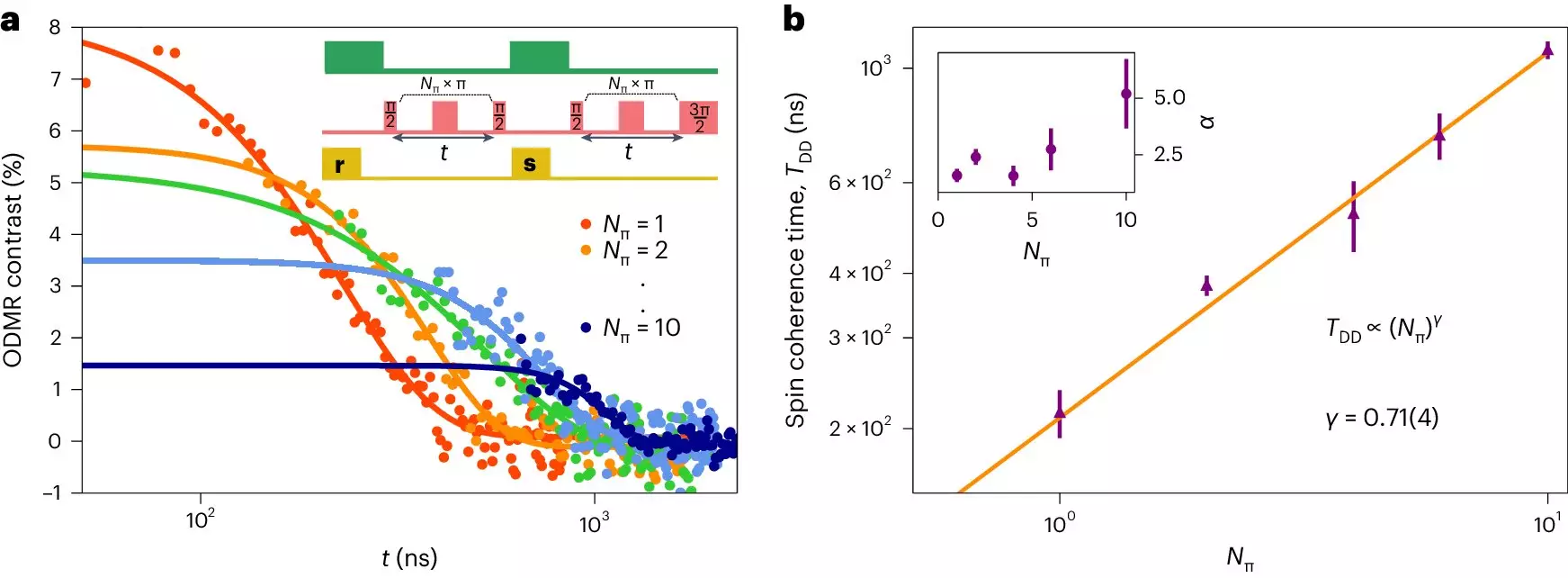The recent discovery made by scientists from the Universities of Manchester and Cambridge has shed light on the potential of 2D materials in advancing quantum technologies. Through their research, they identified a “single atomic defect” in a layered 2D material, hexagonal boron nitride (hBN), that can retain quantum information for microseconds at room temperature. This discovery showcases spin coherence, a property where an electronic spin can preserve quantum information even under ambient conditions. This breakthrough is significant as only a few solid-state materials have been able to exhibit such behavior in the past.
Hexagonal boron nitride (hBN) is an ultra-thin material composed of stacked one-atom-thick layers, similar to sheets of paper. These layers are held together by intermolecular forces, creating opportunities for atomic defects to form within the material. These defects can absorb and emit light and act as local traps for electrons, allowing scientists to study the behavior of trapped electrons, specifically their spin property. By manipulating these electron spins using light at room temperature, researchers have opened up new avenues for quantum technologies.
Dr. Hannah Stern, the first author of the study, emphasized the value of fundamental research in exploring new materials for quantum technologies. The study of hexagonal boron nitride has demonstrated the potential of leveraging excited state dynamics in other material platforms for future quantum applications. Each new system identified contributes to expanding the range of available materials, pushing forward the implementation of scalable quantum technologies.
While there is still much to learn before these findings can be translated into practical applications, the research conducted by the scientists has paved the way for future technological advancements, particularly in sensing technology. By improving the quality and reliability of these atomic defects within hBN, scientists aim to extend the spin storage time and optimize material parameters essential for quantum-technological applications. This ongoing investigation holds promise for the development of innovative quantum technologies.
Prof Richard Curry highlighted the critical role of materials research in supporting the U.K.’s ambitions in quantum technologies. The groundbreaking work from the University of Manchester researchers signifies a significant contribution to the field, enhancing the global impact of their endeavors. By continuing to explore and refine the capabilities of 2D materials like hBN, researchers are paving the way for transformative technological breakthroughs in the realm of quantum technologies.
The discovery of spin coherence in hexagonal boron nitride marks a significant step forward in the field of quantum technologies. By harnessing the unique properties of 2D materials and atomic defects, scientists are pushing the boundaries of what is possible in quantum information storage and manipulation. As research progresses, the potential applications of these findings in sensing technology and beyond are vast, opening up new avenues for innovation and advancement in the realm of quantum technologies.


Leave a Reply
You must be logged in to post a comment.